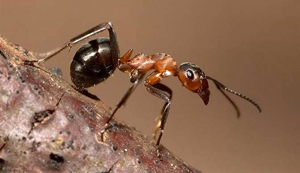 The red ant belongs to the protected species and nests in those places of the forest where it is sunny and protected against the wind.
The red ant belongs to the protected species and nests in those places of the forest where it is sunny and protected against the wind.
The nest of the red ants can hold more than 100.000 ants and is in form of a hill, composed by spruce- and pine needles, little branches and grass, with a complicated tunnel system underground. On the surface there are several constantly guarded entrances, which are blocked for the night or at bad weather conditions and opened for the day.
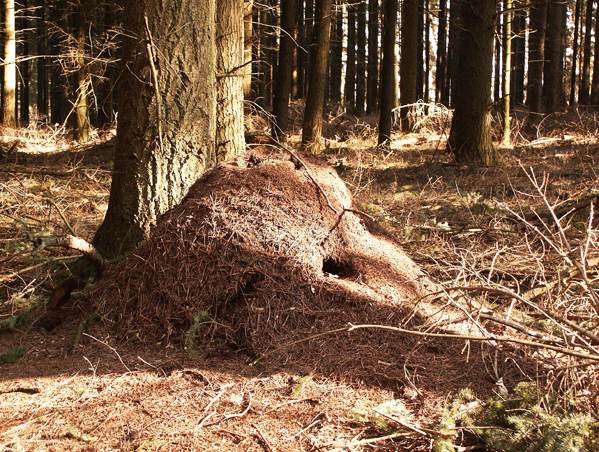
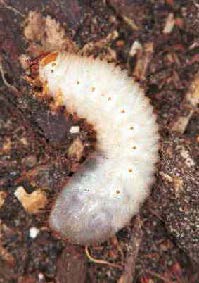 The formica rufa are very sociable insects. Their whole social life turns around the queen, who can reach an age up to 15 years. After the winter she starts her main mission, the egg deposition. After 2 to 6 weeks white larvae are hatching out, becoming young queens, females workers or male ants. Every worker ant ants has a very precise duty: while the ones have to look after the nest with the eggs (renovation a or enlargement), the others are on a guardian mission, or have to bring the food.
The formica rufa are very sociable insects. Their whole social life turns around the queen, who can reach an age up to 15 years. After the winter she starts her main mission, the egg deposition. After 2 to 6 weeks white larvae are hatching out, becoming young queens, females workers or male ants. Every worker ant ants has a very precise duty: while the ones have to look after the nest with the eggs (renovation a or enlargement), the others are on a guardian mission, or have to bring the food.
For the nuptial flight, the winged females and males are leaving the nest at the beginning of May.
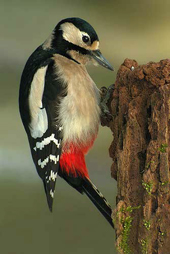
The red ants represent an important source of food for numerous animals.
While copulating the female ant receives the sperm for her entire life, which is conserved until it is needed for a later egg deposition.
After the copulation act the queen is returning or to her old nest or founding a new society. But before that, they are loosing their wings. Normally the males are dying after having fecundated the queen.
The red ants are fed on small insects, dead or alive and mainly on plant louses, from which they particularly relish the egests, being a sort of honey dew. The red ants do not gather winter provisions, as they are falling into hibernation, as all other ant species.
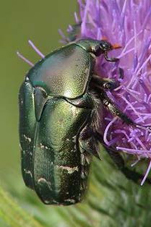 The red ants are welcoming many “guests” intheir nest. Like for example the flower chafer larvae. |
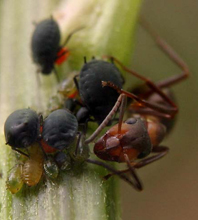 The red ants promote the honey dew production by protecting its producers like plant louses for example. |
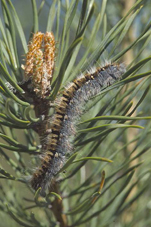 The red ants are capturing hundreds of different insect species, often nocuous for the forest. |
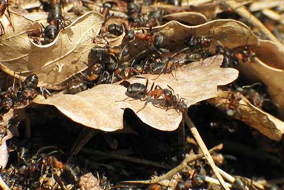 Red ants are improving the soil quality around their nest area. |
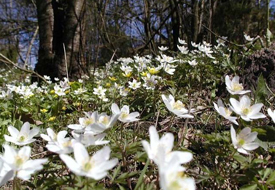 The red ants scatter the seeds of more than 100 native wild plants. |
